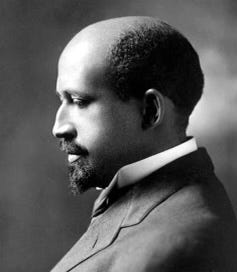

In the quaint town of Great Barrington, Massachusetts, a place steeped in history and whispers of the past, stands the First Congregational Church - a bastion of progressivism and a beacon of hope in the narrative of Black history.
This church, more than a mere structure of worship, wove itself intricately into the life and legacy of W.E.B. Du Bois, a titan of racial intellectualism and civil rights advocacy.
Born into the twilight of the 19th century, Du Bois spent his early formative years in Great Barrington, a town where the colors of diversity were sparse. Here, the First Congregational Church emerged not just as a place of solace but as a crucible for his burgeoning ideologies. Renowned for its liberal ethos, especially on matters of race and equality, the church’s progressive spirit was a lantern guiding Du Bois through his lived experiences and the evolution of his thinking.
In his illuminating work, "W.E.B. Du Bois: Biography of a Race," David Levering Lewis paints a vivid picture of how this church became a cornerstone in Du Bois’s life. It was within these hallowed walls that his views on justice and equality took root, nurtured by the church's inclusive philosophy. His later crusade for rights and his defiance against racial inequities were but reflections of the lessons imbibed in this sacred space.
The Du Bois family, too, found a haven within this church. Post the demise of Du Bois’s father, Alfred, the church wrapped its arms around the family, especially his mother, Mary Silvina Burghardt Du Bois, offering a fortitude that was instrumental in Du Bois’s scholarly pursuits.
Traversing through the annals of American history, the First Congregational Church has remained a constant in Great Barrington. From its inception in the 18th century, the church has mirrored the country’s evolving narrative, all the while clinging to its core tenets of inclusivity and societal welfare.
In essence, the First Congregational Church was more than a religious edifice for Du Bois; it was a sanctuary of intellectual and spiritual evolution, a pivotal force in molding a man who would become a vanguard in the fight for civil rights. This tale of a church and a man underscores the profound impact community institutions can have on shaping history’s giants.
Today, this church stands not just as a relic of the past but as a living, breathing entity that engages with contemporary issues, from social justice to community development, all while honoring its rich heritage.




